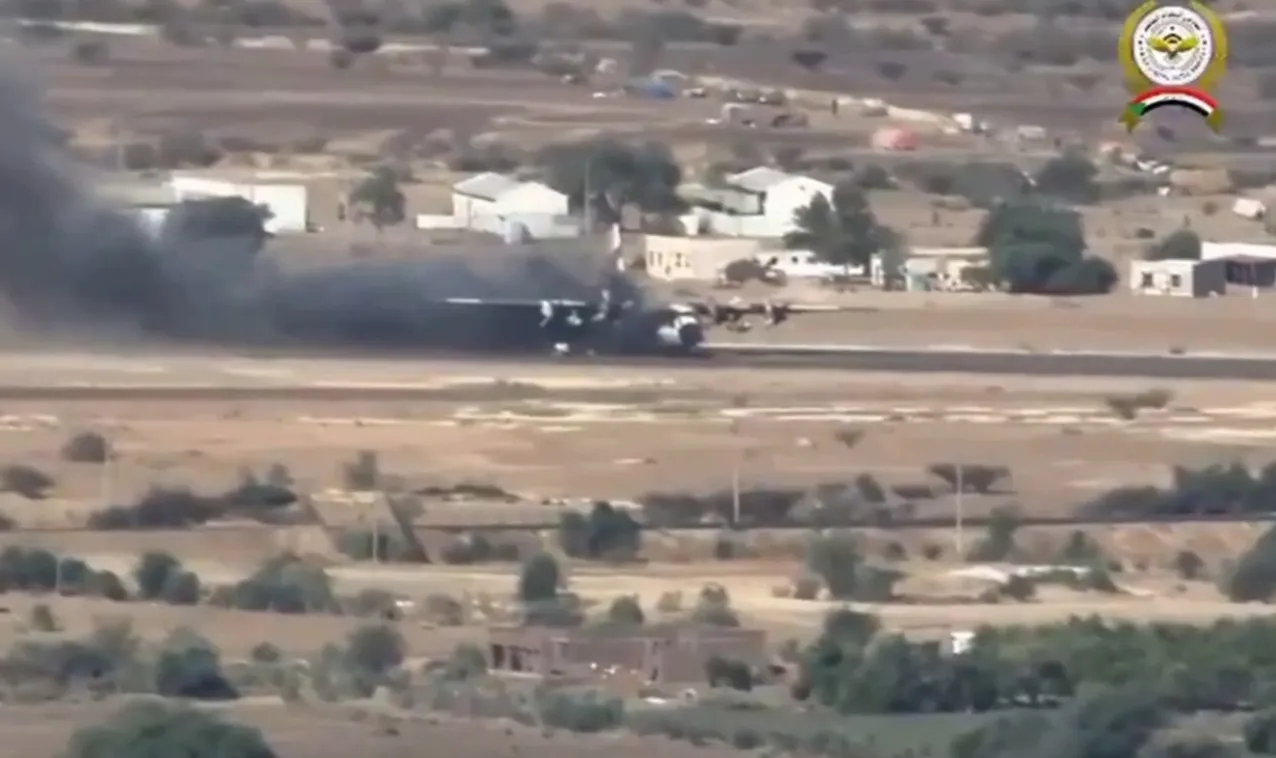The ongoing civil war in Sudan saw the Rapid Support Forces (RSF) paramilitary arm destroy a US-origin C-130 Hercules medium transport aircraft of the Sudanese Air Force in the intervening period between March 19 and 20.
Footage of the strike circulating on social media shows the aircraft taxiing on the runway before an object, presumably the loitering munition, hits on the left.
The war in Sudan is between the nation’s army and the paramilitary Rapid Support Forces (RSF), a group that grew out of the so-called Janjaweed militias. The outfit has been accused of war crimes and genocide in Darfur under Sudan’s former leader, Omar al-Bashir.
They have also been accused of committing mass ethnic killings during the current conflict. In 2019, the army and the RSF fought side-by-side against al-Bashir’s government, which eventually brought it down.
Two years later, they enacted a coup against the civilian transitional government. The army and RSF were supposed to sign an internationally backed plan to transition the country to a civilian government in April 2023; instead, rivalries reemerged, and the two resumed fighting, with each side pinning the blame on the other for the civilian toll.
Kamikaze Drone Hits C-130H
The attack took place at the Wadi Saydana air base, 22 kilometers north of Khartoum. The professionally edited video released by the RSF first showed a satellite image of the base, with the C-130 Hercules reaching the end of the runway, presumably after landing.
The entire video, just over a minute, was shot from a distance, meaning the strike was carefully coordinated after observing the timings and movements of air operations.
The plane is then parked, facing across the breadth of the runway, with the video cutting to an explosion on its right fuselage, possibly just behind the wing. The plane keeps billowing black smoke and cannot be expected to resume operations for at least a year.

While the make of the improvised kamikaze drones is not clear, an inference can be drawn from the other drone attack videos the RSF has released. These show quadcopter UAVs dropping bombs on streets and flying explosive-laden quadcopters into houses, building windows, vehicles, and walled compounds in what appear to be targeted assassination killings of rivals.
Civil War After Civil War
The RSF, borne out of the Janjaweed militia that participated in the Darfur conflict of the 2000s, was regularized by the government with salaries and a formal structure as part of a peace deal. However, reports have described the Sudanese Armed Forces (SAF) as significantly lagging with obsolete weapons.
The RSF, on the other hand, is observed to be better organized and armed. Many reports claim they are supplied and supported by Russia’s Wagner Group and the United Arab Emirates (UAE). Abu Dhabi has, however, consistently denied the allegations.
“The RSF’s known heavy military equipment encompassed Soviet- and Chinese-made infantry vehicles, armored personnel carriers, anti-aircraft guns, and vehicle-mounted machine guns,” a report said. The destroyed C-130, meanwhile, is the ‘H’ variant (C-130H) and was the sole such aircraft in its inventory, according to data tabulated by Flight Global’s World Air Forces 2024 report.
The C-130H Hercules
The C-130H Hercules is a prior variant of the C-130J Super Hercules. Replacing the C-130A and improving upon the C-130E, the C-130H flew with uprated engines, redesigned outer wings, improved pneumatic systems, new avionics, improved radar, and NVG lighting.
It has been described as an all-purpose theater transport that performs diverse roles, including tactical and inter-theater airlift and airdrop, AE, aerial spraying, aerial firefighting, and humanitarian support.
Meanwhile, the RSF and the SAF remain deadlocked, fighting a mildly intense urban war in Khartoum, targeting each other’s supply lines and fuel and ammunition depots through artillery and drone strikes. Neither side has been able to concentrate force against the other.
- The author can be reached at satamp@gmail.com
- Follow EurAsian Times on Google News